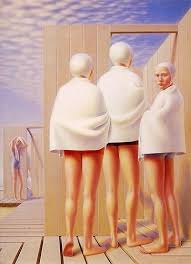A Brief History of Egg Tempera
- Karolina Sotomayor
- 6 nov 2017
- 2 Min. de lectura
While conducting some research for my current internship, I found out that the use of egg tempera as a pigment had an interesting revival in the 20th century in America. I thought it would be of interest to some of you to get to know some of the artists that were part of its revival and what these pigments look like in some of my personal favorite paintings in this regard.
Dating back to the 12th century, egg tempera is an ancient technique that consists of blending egg yolk, powdered pigment and distilled water to make what artist would use instead of oils, or acrylic. Tempera comes from the Latin word temperare, which means blending or mixing.
The medium lost popularity after the 16th century until Daniel V. Thompson tested its use once again in the 1930s at the Courtauld Institute. In 1936 he wrote a technical book on the subject titled The Practice of Tempera Painting, for which American artist of the time, Lewis E. York contributed with illustrations.
York carried on with the revival of egg tempera painting by teaching it to his students at the Art Students League in New York City. Among his pupils were Reginald Marsh and George Tooker. What is most interesting about this revival is that it continued throughout the second half of the 20th century, with Joseph Albers’ Homage to the Square paintings and Jackson Pollock’s all over paintings.
The images provided will help you not only see what the application of egg tempera looks like, but also to get to know some of the U.S. American artists that were part of it. Enjoy!


































Comentarios